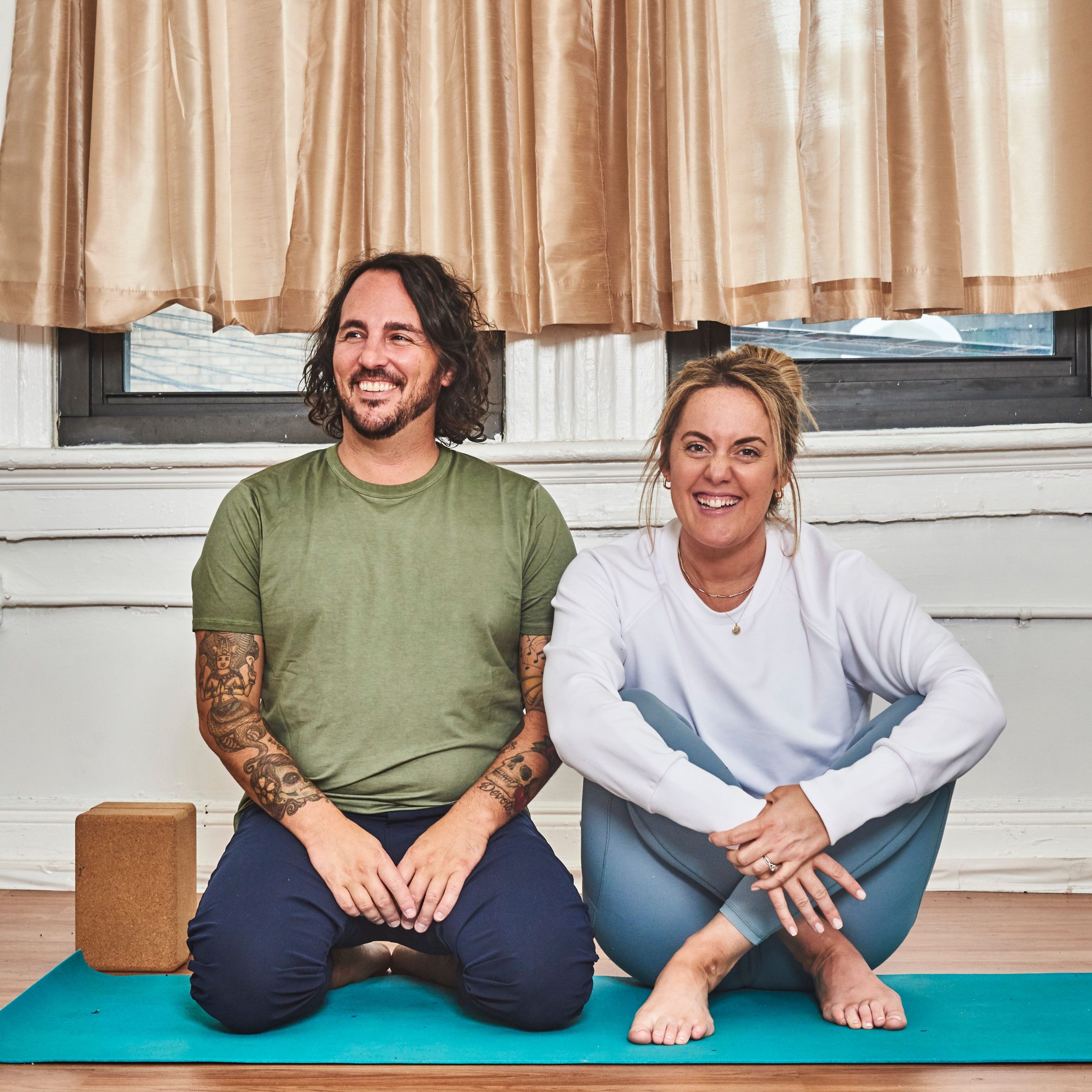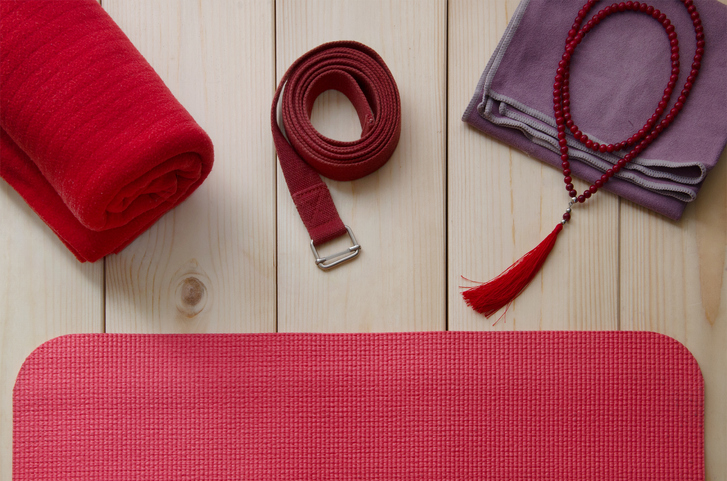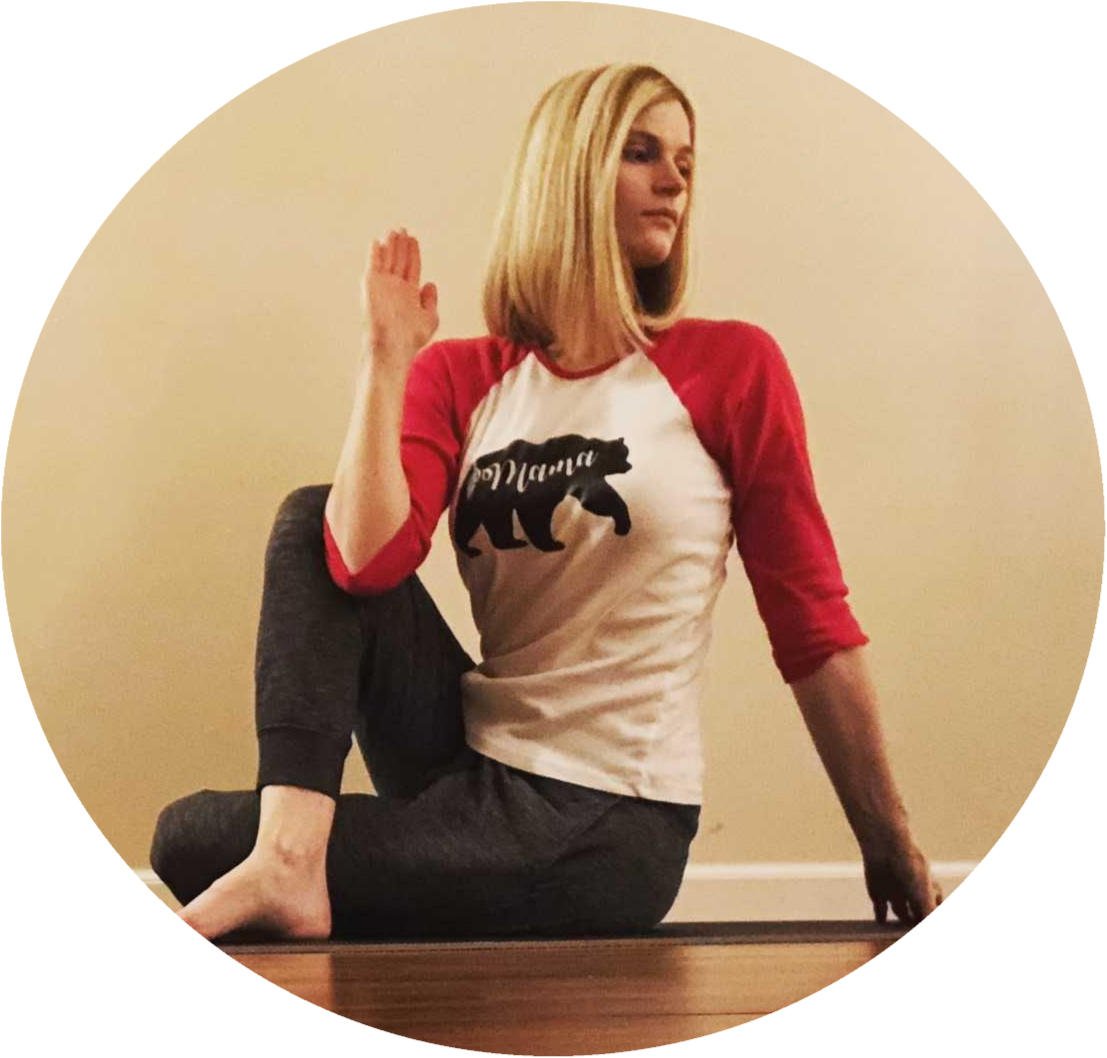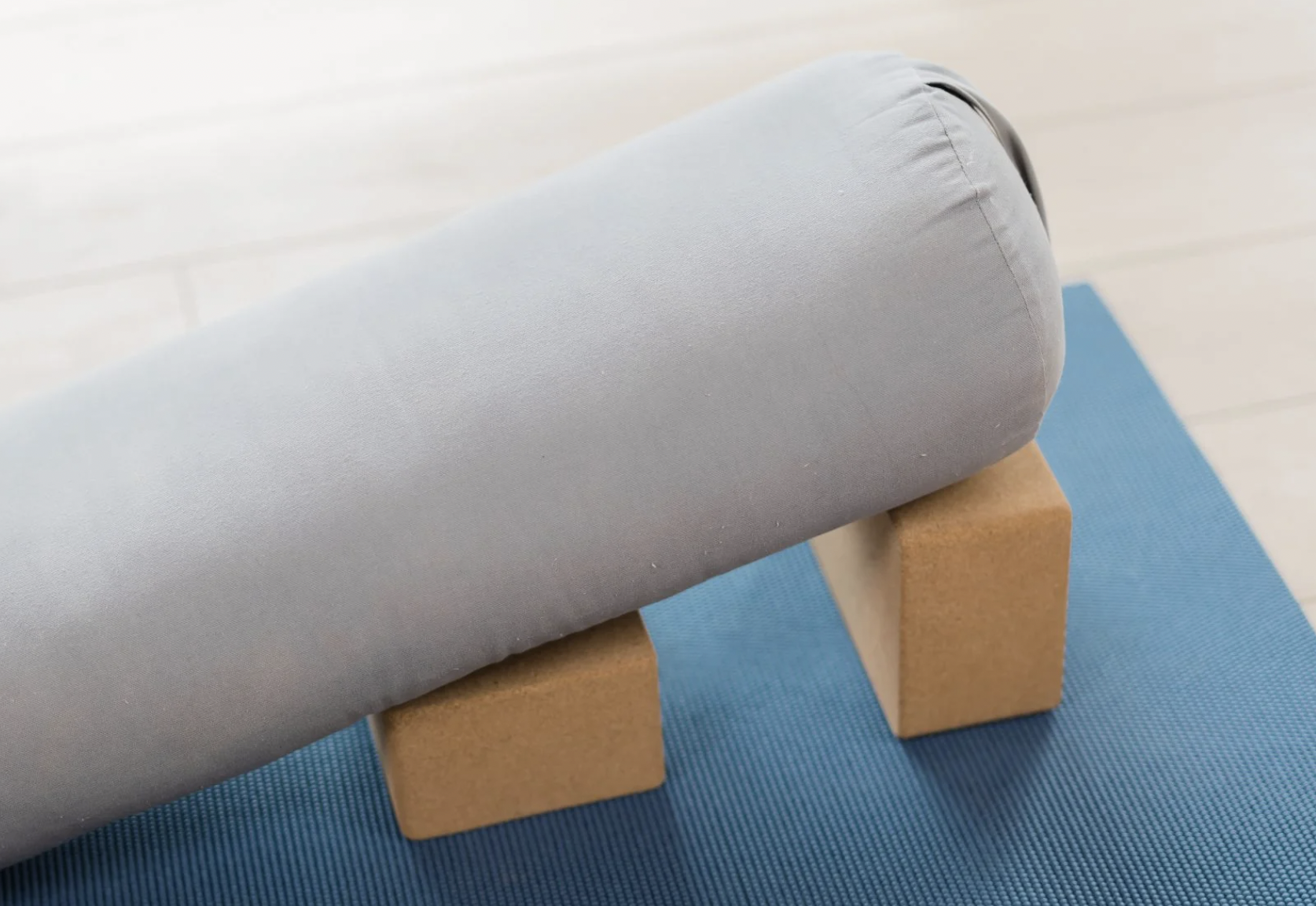
What props do I need for yoga?
While props aren’t necessary for a yoga practice, they do come in handy. Props can be used for additional support, steadier balance and even a deeper stretch when settling into yoga poses. The type of props you will need also vary depending on the type of yoga class it is. For example, a restorative practice is probably going to use more blankets and bolsters, whereas a vinyasa flow may be reliant on blocks and straps. The utilization of props isn’t dependent on ability but rather the purpose of the pose. People in very advanced yoga classes will often use blocks when they feel they need added support to perfect their alignment in a pose, or use straps to provide a wider opening of parts of the body that may not be as flexible.
1. Blocks
Yoga Blocks
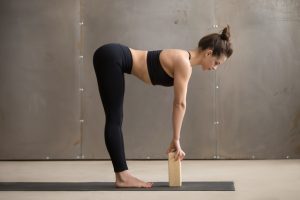 B.K.S. Iyengar first introduced yoga blocks into his practice to better assist himself and his students’ alignment in the asanas. Iyengar would use wooden blocks, but over the years other materials have taken the place of wood. Blocks have since then been heavily incorporated into almost every style of yoga. They also come in different dimensions, with the most common being 4 x 6 x 9 inches. They have different weights as well, with the standard being around 12-13 ounces.
B.K.S. Iyengar first introduced yoga blocks into his practice to better assist himself and his students’ alignment in the asanas. Iyengar would use wooden blocks, but over the years other materials have taken the place of wood. Blocks have since then been heavily incorporated into almost every style of yoga. They also come in different dimensions, with the most common being 4 x 6 x 9 inches. They have different weights as well, with the standard being around 12-13 ounces.
Common materials of yoga blocks:
- Cork
- Foam
- Wood
When to use blocks:
Any pose that makes you wish the floor would come to meet you halfway is a good pose to use a block. For example, in Triangle pose, place a block on the outside of your front leg and rest your bottom hand on the block. Try starting with the block at its tallest, then in time work on getting it to the middle, or lowest height before being able to reach the floor with your bottom hand. You can also use blocks to help with balance, such as placing a block under one or both hands for support in Warrior III if you are unable to balance with your arms outstretched in front of you.
You can also use blocks as support under the back or legs. For example, under the sacrum in Bridge Pose, or under each leg in Cobbler’s Pose. Adding extra support allows the muscles to relax into the pose more easily.
A few more of the many options for using blocks include:
- Placing blocks under both hands in Camel Pose or Wide-Angle Forward Fold
- Use the lowest height under both hands in Upward Facing Dog to take strain off the wrists
- Use as a foot stand for balance in Eagle Pose, or place under your seat in Pigeon Pose.
A yoga block is probably the most versatile of all the yoga props, so it’s usually wise to purchase them first.
2. Pillows/Bolsters
Pillows/Bolsters
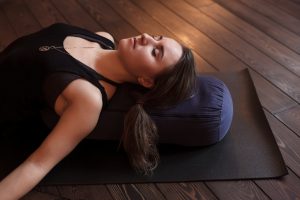 Pillows and bolsters are a great way to find comfort when you need a soft, cushiony space for yourself in a pose. Bolsters are ideal for restorative and yin poses, as they add the extra support often needed in deep, restful poses. Pillows are a great addition for teachers and students to sit on when a block is just a bit too hard or rough.
Pillows and bolsters are a great way to find comfort when you need a soft, cushiony space for yourself in a pose. Bolsters are ideal for restorative and yin poses, as they add the extra support often needed in deep, restful poses. Pillows are a great addition for teachers and students to sit on when a block is just a bit too hard or rough.
When to use pillows and bolsters:
Pillows can provide extra cushion or space that can make many poses more accessible or more comfortable. In some poses, you may find you need more support from a bolster if your pillows are too flat or small.
Here are a couple ways to incorporate bolsters and/or pillows into your practice:
- Tuck a bolster under your back in Reclined Goddess Pose
- Place under your seat in Hero Pose or under a leg in Pigeon Pose
- Rest your legs on pillows in Reclined Supine Twist
- You can also use bolsters and pillows when doing Legs up the Wall or lying in Savasana
3. Straps
Straps
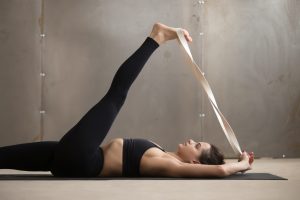 Straps come in a wide variety of lengths and styles for purchase. Straps will help you deepen stretches without compromising the position of your back and can be used in many poses.
Straps come in a wide variety of lengths and styles for purchase. Straps will help you deepen stretches without compromising the position of your back and can be used in many poses.
When to use straps:
Straps are beneficial for muscle tension, such as tight hamstrings, or when you need some extra length in stretching the shoulders or legs.
Here are a couple ways to utilize a yoga strap:
- In Seated Forward Fold, you can wrap a strap around the balls of your feet and hold one side of the strap in each hand; gently pull yourself toward your feet with the straps, keeping a straight back rather than hunching over to force the pose.
- In Cow Face Pose, if you are unable to bind your arms behind your back, hold one end of the strap in each hand and slowly wrap the strap around your wrist to bring the hands closer together with time.
- Use a strap to modify King Pigeon or Dancer Pose by looping it around the front of your foot, just below the toes and holding the other end with your hands to slowly bring your bent leg closer.
4. Blanket(s)
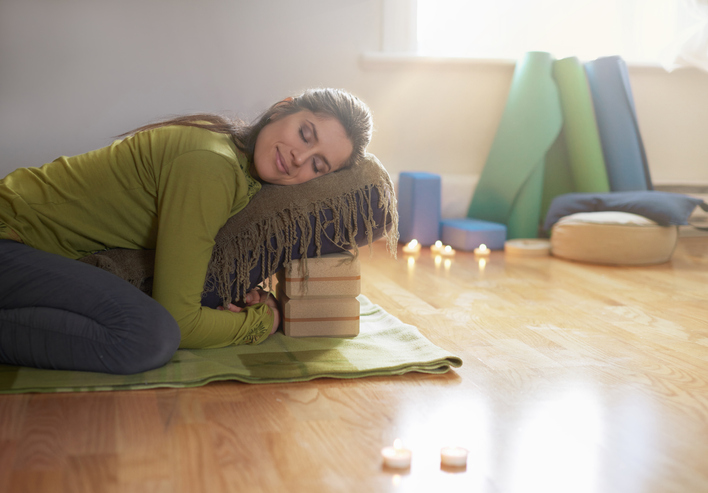
Blanket(s)
Folded blankets is are easy yoga props to have on hand and can be used in more ways than you might think. They are the perfect addition to savasana for added comfort and warmth.
When to use a blanket/blankets:
- Use a folded blanket as support under the knees in any pose with the knee on the mat such as Low Lunge, Cat/Cow, or Gate Pose.
- Use a folded blanket under the wrists, (with the wrists being higher than the fingertips), to reduce wrist pain.
- Use a folded blanket under the wrists in Upward Facing Dog, Downward Dog, Cat/Cow, or any pose where you put weight into the hands.
- A folded blanket under your seat in Hero Pose or Child’s Pose will work if a pillow is unavailable or too large.
- And of course, (as mentioned above), use a blanket to be warm and cozy during Savasana.
Practical prop substitutions
If you are unable to come in contact with yoga props, household items will usually do. Books, boxes, canned goods, or other sturdy, square-shaped items can work in place of the yoga blocks. A towel or even a cozy blanket can substitute for an actual yoga blanket. Belts, towels, or rolled up t-shirts can step in for the use of yoga straps and bed pillows can make a great substitution for legitimate yoga pillows.
All of these substitutions will come in handy when practicing specific types of yoga. For example, if you are more inclined to attend or lead a restorative yoga class, you may be more inclined to keep blankets, bolsters and blocks on hand. If you’re attending or leading a vinyasa class, blocks and straps are probably more appropriate. Below are a list of the common props needed for each practice based on the movements and alignment of the poses practiced in each style.
Props for Yin Yoga
- Bolsters
- Blocks
- Blankets
Props for Restorative Yoga
- Bolsters
- Blocks
- Blankets
Props for a Vinyasa flow
- Blocks
- Straps
- Blankets
Props for Iyengar Yoga
- Blocks
- Straps
Additional props you can use
Beyond these basic prop suggestions comes a multitude of additional props you can use to enhance your practice. Most of the time, it will depend on what type of class you are teaching. For example, sand bags, eye pillows, wheels, wedges, gripping gloves and socks, are all items utilized in a yoga practice to enhance the comfort, mobility and versatility of a class. Whatever yoga props you use, use them with confidence, and know that they are great tools to further your yoga practice.
Join our mailing list for incredible weekly content!
